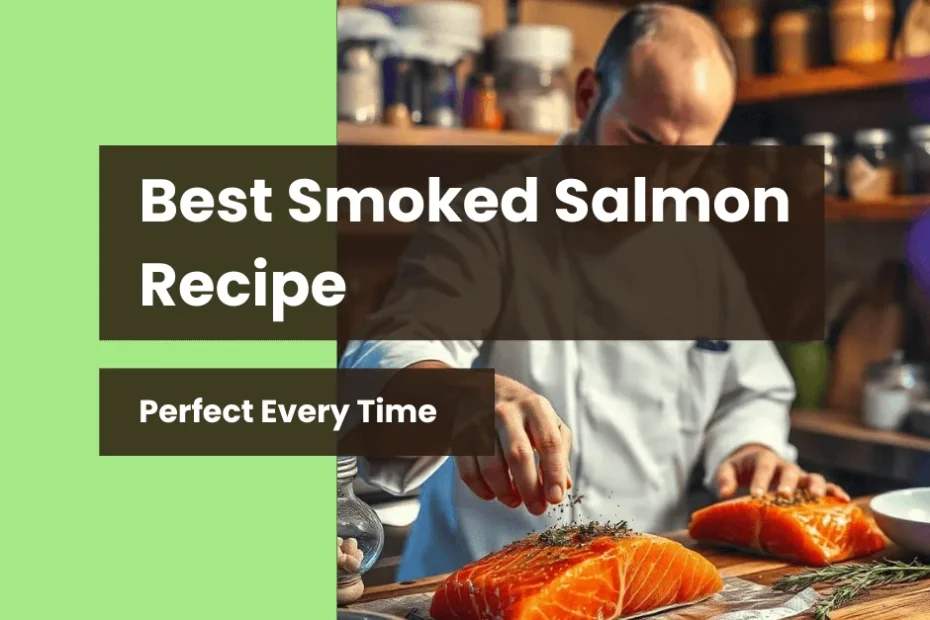As the sun sets, the smell of smoked salmon takes me back to my childhood. Growing up in the Pacific Northwest, smoking salmon was a tradition passed down through generations. The delicate, seasoned fillets were a source of pride, showing the hard work and dedication of those who mastered it.
Today, I’m excited to share my secret recipe for the best homemade smoked salmon. This guide is for both seasoned smokers and novices. It will help you get the perfect flavor and texture every time.
Key Takeaways
- Discover the secrets to hot smoking salmon for maximum flavor and texture
- Learn the optimal temperature and time for Traeger smoked salmon or any pellet grill
- Understand the importance of proper internal temperature and storage for food safety
- Explore the benefits of home-smoked salmon over store-bought options
- Unlock the perfect balance of seasonings, including brown sugar, salt, and BBQ rub
Table of Contents
You can begin by watching this helpful video from Chef Tips.
Understanding the Art of Smoking Salmon
Smoking salmon turns this fish into a tasty treat. You can choose between hot and cold smoking. Both methods add a smoky flavor that makes salmon even better.
Hot Smoking vs Cold Smoking Methods
Hot smoking uses higher temperatures, around 180°F, to cook the salmon. This makes it flaky and gives it a strong smoky taste. Cold smoking, on the other hand, uses lower temperatures, about 90°F. It results in a milder flavor and a softer texture.
Why Smoking Enhances Salmon Flavor
Smoking keeps the salmon’s natural oils and brings out its umami. The smoke and fish mix creates a rich, complex flavor. Plus, smoking helps keep the salmon fresh longer, letting you enjoy it just the way you like it.
Benefits of Home-Smoked Salmon
- Smoking salmon at home can save you money. It’s cheaper than buying pre-smoked salmon, which can cost over $15 per pound.
- By smoking salmon yourself, you control everything. You choose the ingredients and the smoking method.
- There’s no feeling quite like making gourmet smoked salmon at home. It’s a source of pride and joy.
Learning to smoke salmon opens up new culinary adventures. You can try different woods and brines to find your favorite flavor. Whether you like the bold taste of hot-smoked salmon or the subtle taste of cold-smoked, the process is rewarding.
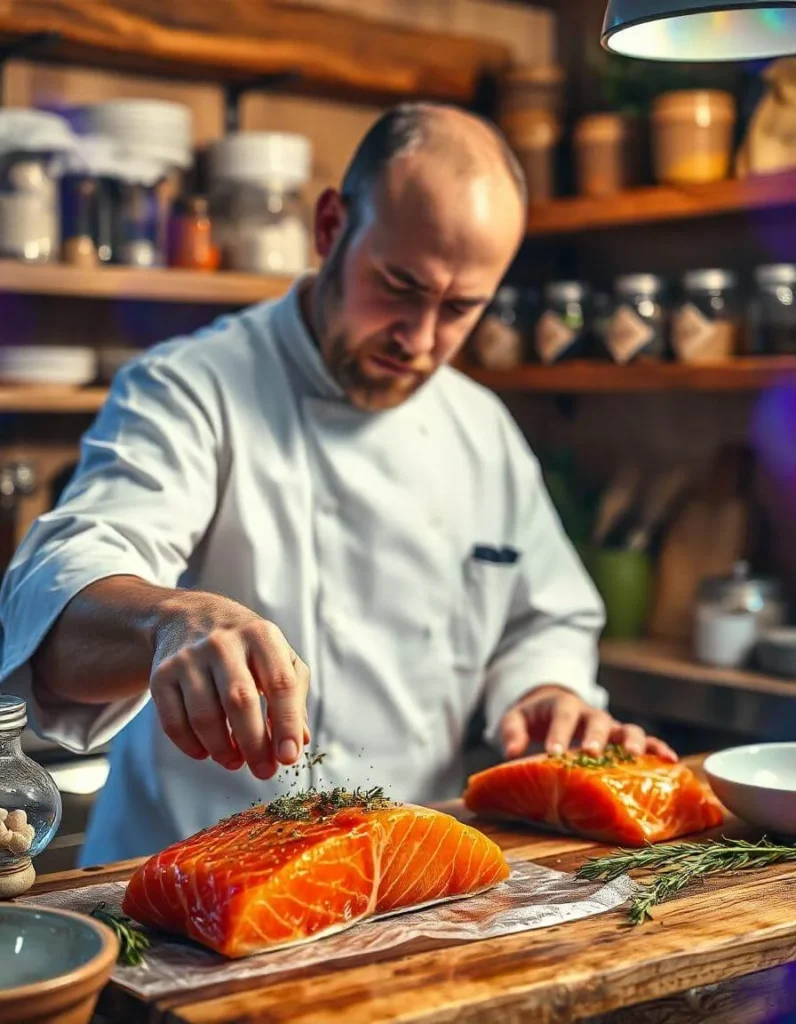
Essential Equipment and Tools for Perfect Smoked Salmon
Smoking salmon at home needs the right tools for that perfect flavor. A pellet grill, like the Traeger, is key. It keeps the temperature steady, which is vital for great salmon. You’ll also need a few more tools:
- Meat thermometer: An instant-read thermometer is a must-have for monitoring the internal temperature of your salmon as it smokes.
- Basting brush: A sturdy basting brush will allow you to apply any glazes or sauces to the salmon during the smoking process.
- Cooling rack: A large cooling rack or sheet pan is helpful for resting and drying the salmon after it’s been brined and before smoking.
For brining, a big glass bowl or baking dish is needed. Also, pin bone tweezers are essential for removing bones. With these salmon smoking equipment, you’re set to make delicious smoked salmon at home.
The Traeger pellet grill, especially the 34-inch model, is great for big batches. It can handle up to 6 pounds of salmon. Just remember to keep the temperature at 180°F for the best taste.
| Essential Smoked Salmon Equipment | Recommended Products |
|---|---|
| Pellet Grill | Traeger Pellet Grill |
| Meat Thermometer | Thermopro Instant Read Thermometer |
| Basting Brush | OXO Good Grips Silicone Basting Brush |
| Cooling Rack | Checkered Chef Baking Rack |
| Brining Container | Large Glass Bowl or Baking Dish |
| Pin Bone Tweezers | Kershaw Fish Bone Tweezers |
With the right smoker accessories and practice, you’ll make the best smoked salmon. Enjoy your delicious dish!
Selecting the Right Type of Salmon
Choosing the right salmon for smoking is key to great flavor and texture. High-quality salmon like king or coho might seem perfect, but they’re better for other cooking methods. Instead, pick salmon with a lighter color and milder taste, like pink or chum salmon.
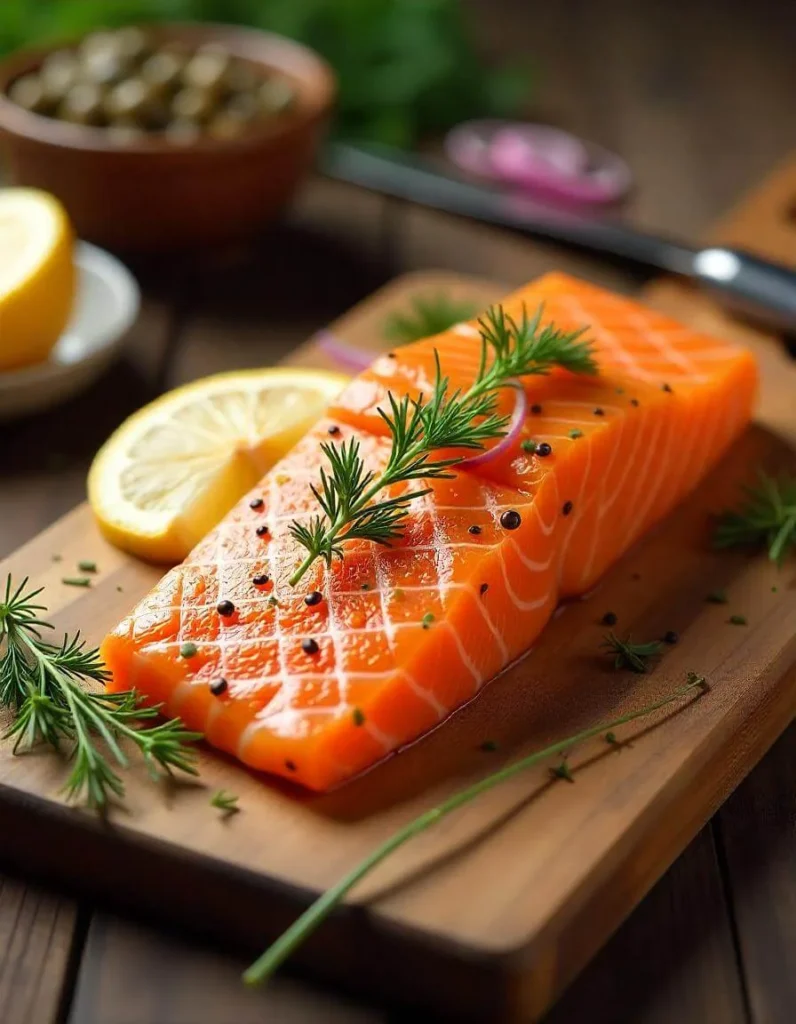
Best Salmon Varieties for Smoking
- Pink salmon (humpies): Lighter color and mild flavor, making it an excellent choice for smoking.
- Chum salmon: Also known for its lighter color and delicate taste, chum salmon is another ideal variety for the smoking process.
Fresh vs. Frozen Salmon Considerations
Fresh salmon is usually the top pick for smoking. But, frozen salmon can also be great if it was frozen quickly and kept at a steady temperature. Frozen salmon might need a bit longer to smoke to get the right texture and taste.
Size and Thickness Guidelines
The best size for smoked salmon fillets is 2 to 2.5 pounds. Cut them into sections of 4 to 6 inches for even cooking. This ensures all parts of the salmon are smoked evenly.
| Fillet Size | Smoking Time |
|---|---|
| 2-3 lb fillet | 1.5-3 hours |
| 1-2 lb fillet | 45 minutes – 1.5 hours |
To get perfectly smoked salmon, choose the right type and follow size guidelines. This will lead to moist, flavorful, and delicious smoked salmon.
Best Smoked Salmon Recipe Step-by-Step Guide
Improve your cooking skills with this smoked salmon recipe. Learn how to get the right mix of smoky, sweet, and savory tastes in your homemade smoked salmon. This step-by-step salmon smoking guide will help you make a dish that will wow your loved ones.
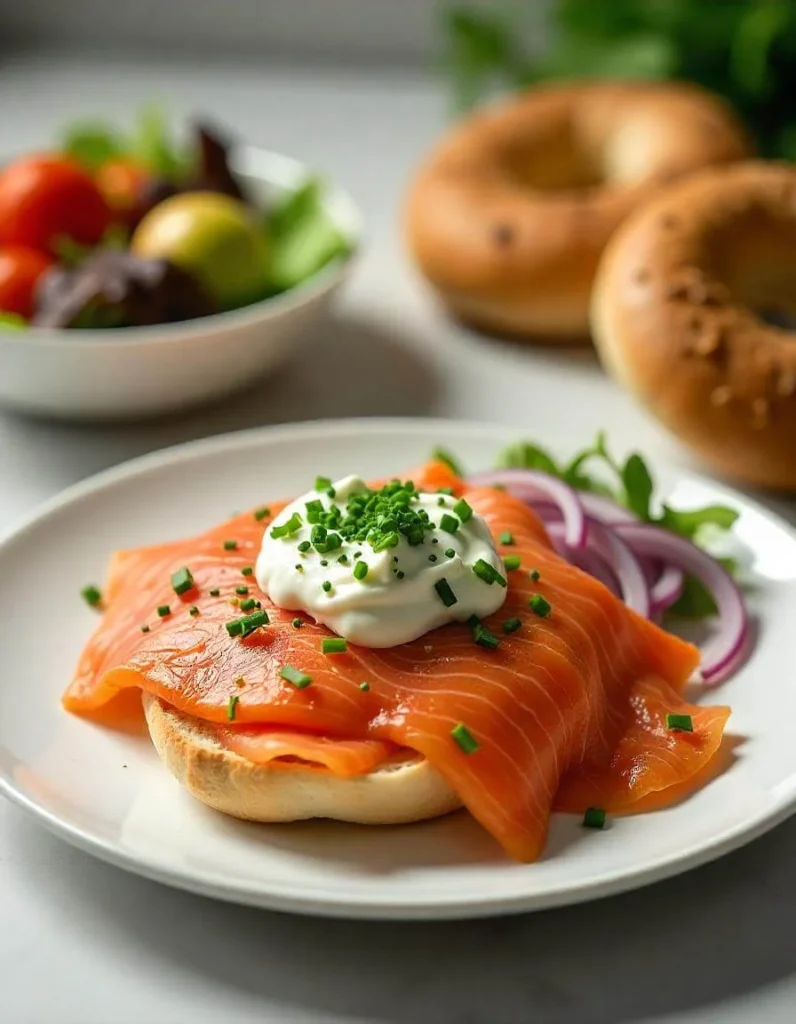
- Start by removing any pin bones from the salmon fillets with tweezers.
- Make the brine by mixing water, kosher salt, brown sugar, garlic powder, and black pepper in a big container.
- Put the salmon fillets in the brine and chill for 8-12 hours, based on the fillet thickness.
- After brining, dry the salmon with paper towels and put it on a cooling rack in the fridge for 8-12 hours. This step is key for creating the perfect pellicle, which helps the smoke stick to the salmon.
- Heat your smoker to 180°F. Once it’s ready, put the salmon fillets on the grill grates, making sure they don’t touch each other.
- Every hour, brush the salmon with pure maple syrup to add sweetness and keep it moist.
- Smoke the salmon for 3-5 hours, depending on its thickness, until it reaches 145-165°F inside.
- After the salmon is cooked, take it out of the smoker and chill it in the fridge for 8-12 hours. This lets the flavors blend and the texture firm up.
By using this smoked salmon recipe and step-by-step salmon smoking guide, you’ll get a delicious, perfectly smoked salmon. It’s perfect on its own or in many dishes.
Creating the Perfect Brine Solution
Brining is key to making delicious smoked salmon. It’s like a seasoning bath that adds saltiness, sweetness, and spices. Learning to brine well can make your homemade smoked salmon amazing.
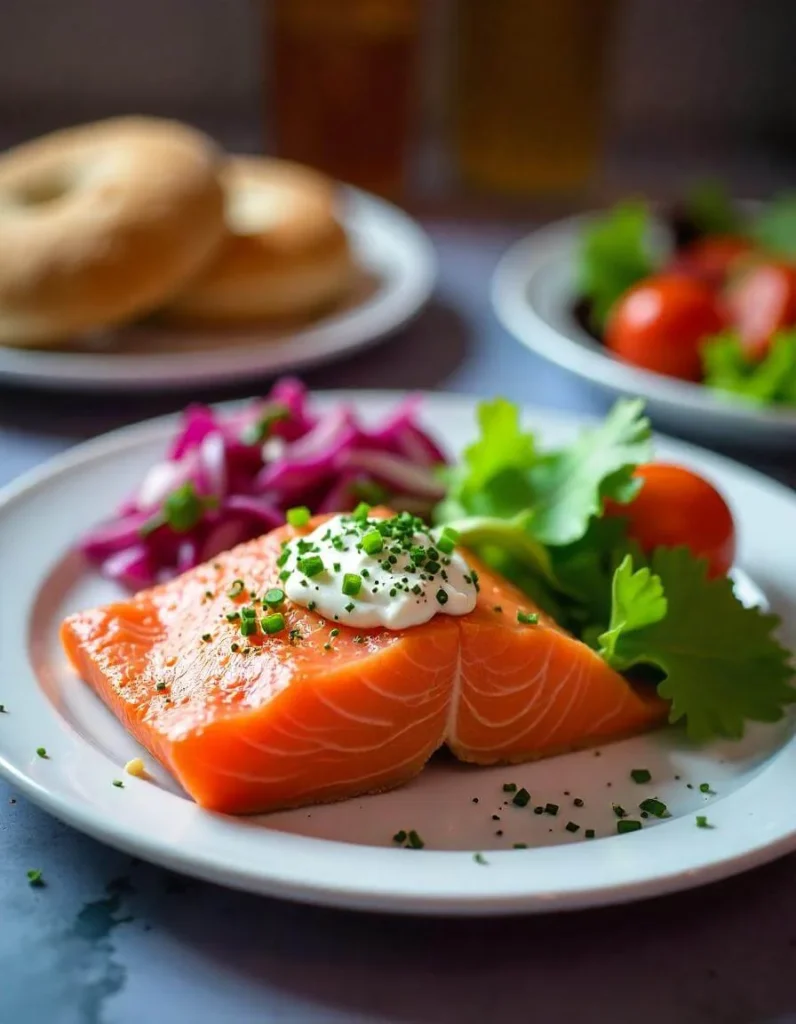
Essential Brine Ingredients
Choosing the right ingredients is crucial for a great brine. For a top-notch salmon brine, you’ll need:
- 4 cups filtered water
- 1/3 cup kosher salt
- 1/2 cup brown sugar
- 2 teaspoons garlic powder
- 2 teaspoons black pepper
Brining Time and Temperature
The best brining time for salmon is 8 to 12 hours. Make sure the salmon is fully covered in the brine. This ensures the flavors soak in well. Always keep the salmon in the fridge to stay safe.
Common Brining Mistakes to Avoid
There are a few mistakes to steer clear of when brining salmon. Don’t brine for more than 12 hours to avoid too much salt and a mushy texture. Also, use non-iodized salt for the best taste, as iodized salt can taste bad.
| Brine Ingredient | Amount |
|---|---|
| Filtered Water | 4 cups |
| Kosher Salt | 1/3 cup |
| Brown Sugar | 1/2 cup |
| Garlic Powder | 2 teaspoons |
| Black Pepper | 2 teaspoons |
By following these tips and avoiding common mistakes, you’ll make delicious smoked salmon. It will be full of flavor and have a great texture.
Temperature Control and Smoking Techniques
Mastering smoked salmon needs precise temperature control and proven techniques. Keep your smoker at 180-225°F for the best flavor and texture. Temperatures too low can dry out the salmon, while too high can overcook it.
The smoking time is 3-5 hours, based on the salmon’s thickness. Avoid crowding the pieces on your grill grates to ensure even smoke. Lightly oil or spray the grates to prevent sticking, placing the salmon skin-side down.
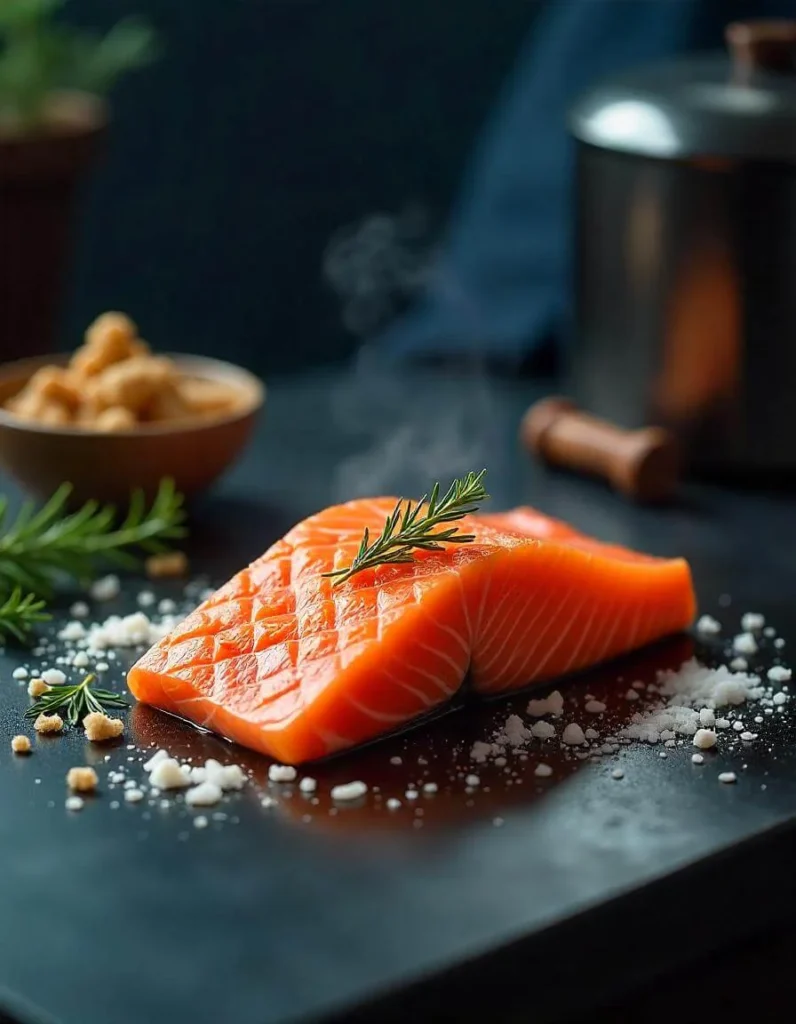
Pellet Grill Smoking Techniques
Pellet grills offer great temperature control and smoke. Set it to 180-225°F and preheat fully. Then, place your seasoned salmon fillets skin-side down and let it smoke.
- Keep the smoking temperature at 180-225°F for the best results.
- Smoke the salmon for 3-5 hours, depending on its thickness.
- Prevent sticking by lightly oiling or spraying the grill grates before adding the salmon.
- Position the salmon skin-side down on the grates to allow for even smoke penetration.
- Avoid overcrowding the grill to ensure proper smoke circulation around each piece.
By following these steps, you’ll make delicious, perfectly smoked salmon. It will impress your family and friends. Enjoy the rich, smoky flavors of your homemade salmon.
The Critical Pellicle Formation Process
Creating the perfect smoked salmon starts with forming a pellicle. This thin, shiny layer seals the fish. It helps the smoke stick to the surface and keeps moisture in during smoking.
Why Pellicle Matters
The pellicle is key in making smoked salmon. It stops albumin, a protein, from leaking out and ruining the look. It also keeps the fish juicy and tender.
How to Achieve the Perfect Pellicle
- Refrigerate the brined salmon on a cooling rack for 8-12 hours. This helps the fish dry and form a pellicle.
- Keep the area cool and breezy, around 60°F or cooler. This is best for the pellicle to form well.
- Allow at least 2 hours for the pellicle to form, but 3 hours is better for a good coat.
Mastering the pellicle formation makes smoked salmon look great and taste amazing. This step is crucial for perfect smoked salmon every time.

Maple Syrup Basting and Moisture Control
To keep your smoked salmon moist and flavorful, try basting it with pure maple syrup. This method adds sweetness and keeps moisture in the fish. Just apply a thin layer of syrup to the salmon every hour while it smokes.
Maple syrup basting does more than just add moisture. It also removes albumin, a protein that can appear on the surface. Make sure to use real maple syrup for the best flavor. Honey is a good substitute if you want a different taste.
Using maple syrup basting in your smoked salmon recipe will make your fillets moist and tasty. The maple’s natural sweetness pairs well with the smoky flavor. This creates a delicious and satisfying dish every time.
